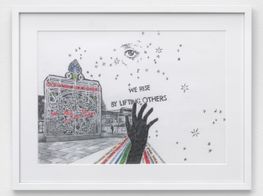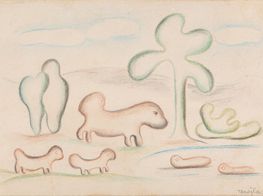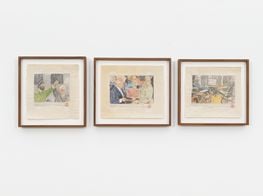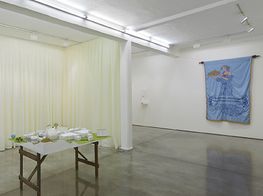Hope Springs at the 34th Bienal de São Paulo
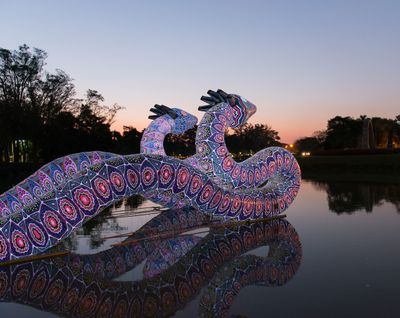
Jaider Esbell, Entidades (2021). Exhibition view: Though it's dark, still I sing, 34th Bienal de São Paulo, São Paulo (4 September–5 December 2021). © Levi Fanan / Fundação Bienal de São Paulo.
Engaging more than 1,000 works by 91 artists from all continents, the 34th Bienal de São Paulo (4 September–5 December 2021), speculates on art's role in a challenging and uncertain present.
The exhibition's title Though it's dark, still I sing is a verse from a 1962 poem by Amazonian writer Thiago de Mello. Written in a period of political turmoil in Brazil, the poem recognises the hope and resilience that comes with addressing political, social, economic crises through art.
Curated by Jacopo Crivelli Visconti with a curatorial team comprising Paulo Miyada, Carla Zaccagnini, Francesco Stocchi, and Ruth Estévez, the main exhibition engages curatorial strategies aimed at fostering multiple perspectives, culminating a curatorial process that has been unfolding over the past two years through exhibitions, performances, talks, and publications organised with over 25 partner institutions in São Paulo and abroad, including Museu de Arte Moderna de São Paulo and The Showroom, London.
The strength of this edition of the Southern Hemisphere's largest art exhibition lies in the generation of productive and, for the most part, cohesive dialogues between at times radically different artworks, without grouping them all under a single overarching theme.
Scattered throughout the Bienal Pavilion are what the curators call 'statements': historical objects that the curators describe as tuning forks around which artworks are presented. The results are constellations not only of paintings, photographs, sculptures, letters, diaries, and artefacts, but of epistemologies and histories.
When entering the Bienal Pavilion's ground floor, visitors encounter some of these statements: a meteorite, a citrine rock (a type of quartz stone), and a contemporary ritxòkò ceramic doll made by Karajá Indigenous women.
In the wider context of this Bienal, darkness may be understood also as isolation, exile, or the feeling of finding oneself in unknown territory.
These objects belong to the Museu Nacional in Rio de Janeiro, which lost thousands of items from its historical and scientific collections due to a devastating fire in September 2018. Their presence here highlights notions of survival and transformation—represented by the meteorite and the quartz stone that survived the fire—as well as reconstruction and reinvention, embodied by the ceramic doll donated by the Karajá community to replace a doll lost in the disaster.
In dialogue with these objects is Proposal for Luzia (2021), by Gala Porras-Kim, which raises questions about institutional policies regarding the conservation of human remains in ethnographic collections.
Commissioned by Bienal de São Paulo, the work consists of a letter addressed to the director of Museu Nacional and a tissue with a hand imprint made with ashes. The subject line of the letter reads, 'Leaving the institution through cremation is easier than as a result of a deaccession policy.'
In the correspondence, Porras-Kim questions the treatment given to Luzia, the oldest known human fossil found in Brazil. Discovered by a French archaeologist in a cave in Minas Gerais in the 1970s, the 12,000-year-old fossil was recovered from the wreckage of the fire that destroyed the Museu Nacional and is currently undergoing a process of restoration and reassembly.
Calling into question the museum's efforts in returning Luzia's remains to its condition as object of research, Porras-Kim suggests its remains should be cremated and given a dignified end.
In the same section, Hanni Kamaly's single-channel video HeadHandEye (2017–2018) develops a similar investigation into dehumanisation, shedding light on how the development of Western knowledge often relied on the exploitation of non-Western others.
The video's fragmented narrative involves a series of linked images taken from different sources of visual culture and relating to different historical times.
These include tattooed Maori heads, 20th-century footage of Amazonian ceremonies, images from science books depicting skulls from different ethnic groups, and excerpts from film and television that relate to themes such as corporal punishment in former British colonies and the restitution of human remains held in European ethnographic collections to their places of origin.
Lothar Baumgarten's Monument for the Native Societies of South America (1978–1982), originally presented at Documenta 7 in Kassel, is located just before the central exhibition space on the first floor, signalling a notable fact about this year's Bienal, which includes the largest number of indigenous artists that have ever participated in the show, though the total number of nine from the Brazilian territory and abroad is hardly commendable.
Among them is Macuxi artist and writer Jaider Esbell, who presents paintings, drawings, and sculpture, including the painting series A Guerra dos Kanaimés (The Kanaimés War) (2020): a sequence of allegorical scenes about the Kanaimés, spirits related to Macuxi culture that can be seen as protectors or predators, depending on their alliances—a myth the artist proposes to reinterpret in the context of current struggles experienced by Macuxi people.
Installed on a lake outside the pavilion is Esbell's site-specific outdoor installation Entidades (Entities) (2021). A large-scale inflated sculpture in the shape of two snakes stands face-to-face with a monument dedicated to Portuguese explorer Pedro Álvares Cabral, regarded as the discoverer of Brazil, making tangible confrontations and encounters between opposite forces, different worlds, and different languages.
At times, some juxtapositions and choices in exhibition design make certain relations seem unclear, and the remarkable abundance of archival and explanatory material at times feels crowded, making visitors feel immersed in too much text and visual stimuli from all sides, a seemingly unavoidable predicament in exhibitions of this scale.
For example, it is hard to say what dialogue is intended between indigenous artist Daiara Tukano's installation Dabacuri no Céu (Dabacuri in the sky) (2021), comprising hanging paintings depicting sacred birds on one side and geometric patterns made with feathers on the other, and a group of sculptures by Lygia Pape, including O olho do guará (Guará's Eye) (c. 1980), a sculpture made with fabric and neon light, and the 'Amazoninos' (1989–2003) series of abstract wall sculptures made from painted iron.
Pape's sculptures seem to connect to Daiara Tukano's installation only by the fact that it draws inspiration from elements present in Amerindian mythologies, but the connection feels rather vague, especially because both works are presented in a section organised around a catalogue from a 1926 Brancusi exhibition showing a dedication written by the artist to Brazilian modernists Tarsila do Amaral and Oswald de Andrade.
Nevertheless, these are minor setbacks in an exhibition, which, as a whole, engenders encounters that generate meaning beyond a predetermined curatorial framework.
In devising the show, the curators cite philosopher Edouard Glissant's book Poetics of Relation, which asserts that identity and knowledge are formed through relation, not in isolation. As such, works and archival objects are conceived as catalysers of ideas that flow through, but do not necessarily settle.
By stressing the importance of opacity and dissonance, the exhibition hopes to demonstrate how knowledge may spring even from disagreement or misunderstandings.
Besides, as curator Paulo Miyada notes, it is important to 'occupy uncertainties' and consider darkness as an ally as much as an enemy. In the wider context of the Bienal, darkness could understood also as isolation, exile, or the feeling of finding oneself in unknown territory.
Brazilian artist Antonio Dias' paintings, located on the second floor, reflect this exercise in orientation. Produced in the late 1960s—a time of escalating violence, repression, and political turmoil not only in Brazil but also in Europe, where Dias was living—diagram-like compositions consist of black monochromes to which Dias added graphic elements in white, including thin frames, words, splashes of paint.
Dias's paintings are hung next to another statement. Two embroidery works, Amôr (Love) and O adeus do marujo (The Sailorman's Goodbye), both produced in 1910 by João Cândido while imprisoned. The Afro-Brazilian sailor was the leader of the naval mutiny 'Revolt of the Las', launched against the use of corporal punishment by white naval officers.
The relation established between Cândido's embroideries and Dias' black monochromes like Environment for the Prisoner (1970) and Terror Square (Panther-Darkness) (1978), which the artists described as works of 'negative art for a negative country', highlights the importance of artistic practice as a field of resistance in times of uncertainty and danger.
Other artworks on view underline art's ability to respond to such conditions on equal terms, expressing creativity as a mysterious, uncertain, and dangerous thing. Take Juraci Dorea's text-based charcoal on canvas works Carta 260.789 (Carta para Angela 01) Letter 260.789 (Letter to Angela), in which the artist writes: 'Meaning and art are disguises, traps, dragons, dark nights and shadows.'
As a whole, the curatorial emphasis on multiplicity and diversity in this exhibition advances a notion of art that goes beyond rigid frameworks and expectations, by inviting visitors to listen to songs written in languages they might not understand.
By stressing the importance of opacity and dissonance, Though it's dark, still I sing hopes to demonstrate how knowledge may spring even from disagreement or misunderstandings. In current times, this is no small achievement. —[O]


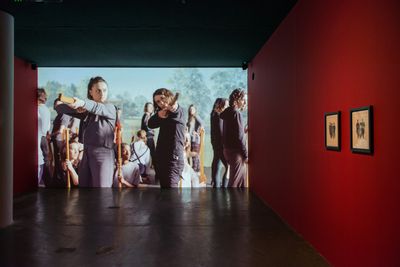

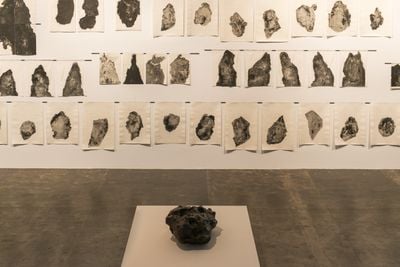
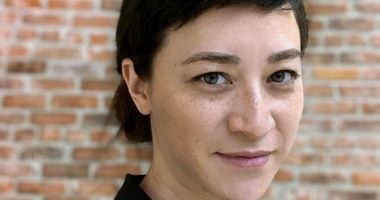
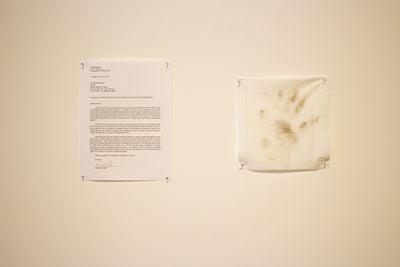
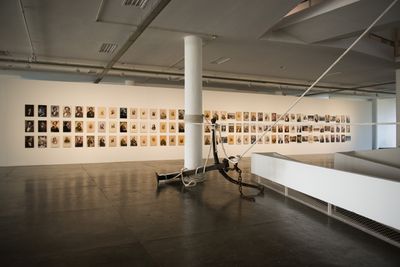
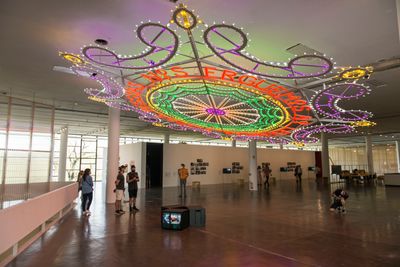


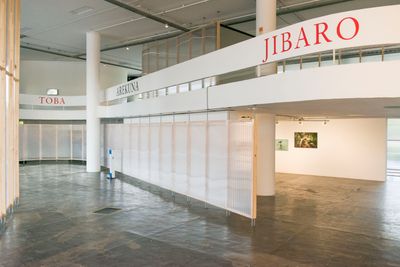
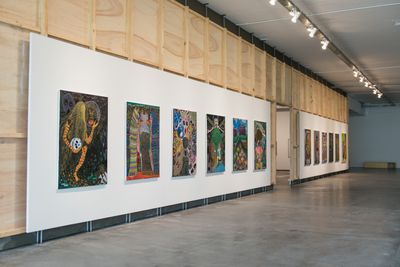
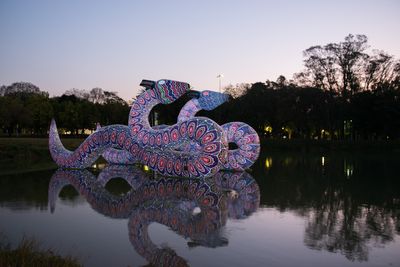
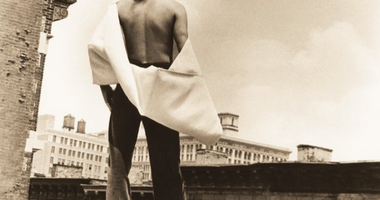
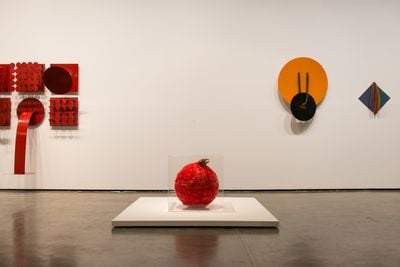
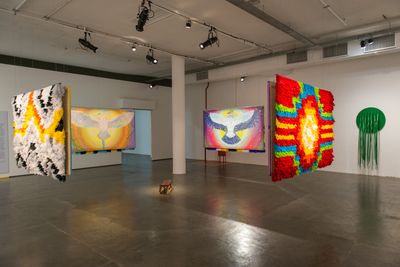


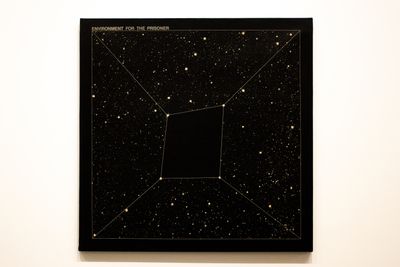
![Juraci Dórea, Carta 260.789 (Carta para Ângela 01) [Letter 260.789 (Letter for Ângela 01)] (1989). Charcoal and PVA (polyvinyl acetate) on canvas. 210 x 150 cm. Artist's collection. Exhibition view: Though it's dark, still I sing, 34th Bienal de São Paulo, São Paulo (4 September–5 December 2021). © Levi Fanan / Fundação Bienal de São Paulo.](https://files.ocula.com/anzax/Content/Reports/2021/Sao%20Paulo%20Bienal/34bspJuraci-Dorea2_400_0.jpg)





